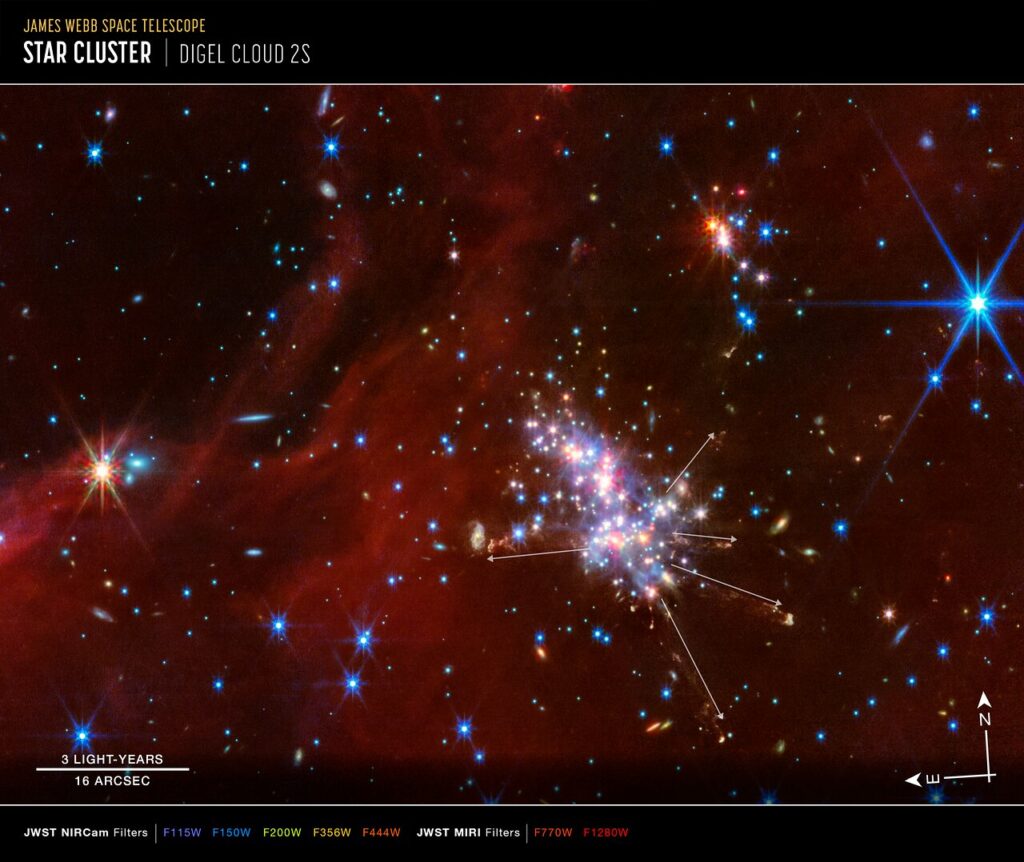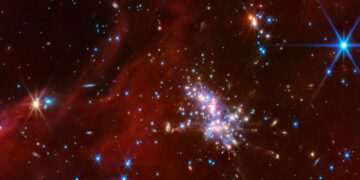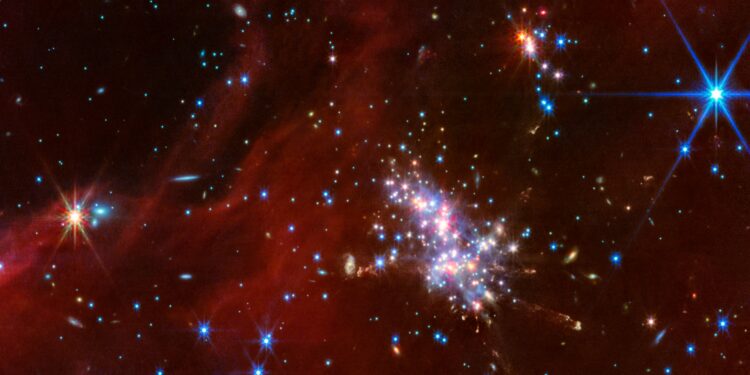The James Webb Space Telescope (JWST) has turned its powerful gaze to the outermost regions of our Milky Way, an area known as the Extreme Outer Galaxy. What does this mean for our understanding of star formation and the evolution of our galaxy? Let’s unravel this cosmic mystery.
What is the Extreme Outer Galaxy?
The Extreme Outer Galaxy represents one of the most intriguing regions for astronomical research, lying on the fringes of the Milky Way. This region is characterized by its distance from the Galactic Center and its unique environment that resembles a “time capsule” for studying the early phases of our galaxy. The stars and molecular clouds in this area provide a snapshot of what the Milky Way might have looked like billions of years ago when it was still in its formative stages.
Astronomers classify the Extreme Outer Galaxy as a low-metallicity region, meaning it has a relatively low abundance of elements heavier than hydrogen and helium. These conditions mirror those found in dwarf galaxies or in the early universe, making it an invaluable site for observing the processes that could have shaped our galaxy’s infancy. By peering into this remote region, the JWST offers a window into the Milky Way’s distant past, allowing scientists to study star formation in an environment that is less chemically evolved than the star-forming regions closer to the Galactic Center.
The Role of the Digel Clouds in Star Formation
Within the Extreme Outer Galaxy lie two particularly fascinating molecular clouds known as Digel Clouds 1 and 2. These clouds serve as stellar nurseries where stars are born in a flurry of cosmic activity. The JWST’s latest observations focused on four distinct star-forming regions within these clouds: 1A, 1B, 2N, and 2S. Each region presents a unique opportunity to study different aspects of star formation under varying environmental conditions.

Digel Clouds 1 and 2 are not just ordinary molecular clouds; they are relatively poor in elements heavier than hydrogen and helium, which makes them crucial for understanding star formation in low-metallicity environments. Such conditions are thought to resemble the state of our own Milky Way in its early history.
Webb’s Observations: Unprecedented Detail and Discoveries
In Cloud 2S, for instance, Webb’s observations uncovered a luminous main cluster of newly formed stars. Several of these young stars were seen emitting extended jets of material from their poles—a classic sign of active star formation. These jets are particularly exciting because they offer clues about the early life phases of stars, including how they gather mass and evolve over time. What’s more, Webb’s data confirmed the existence of a sub-cluster of stars in Cloud 2S, a feature that scientists had long suspected but had not been able to verify until now.
According to Mike Ressler, the principal investigator of the observing program and second author of the study, “What was fascinating and astounding to me from the Webb data is that there are multiple jets shooting out in all different directions from this cluster of stars. It’s a little bit like a firecracker, where you see things shooting this way and that.” This observation showcases the dynamic and chaotic nature of star formation in the Extreme Outer Galaxy.
The Complexity of Star Formation in the Outer Galaxy
Star formation in the outer reaches of the Milky Way is influenced by different dynamics compared to regions closer to the Galactic Center. For example, the gravitational forces, the availability of molecular gas, and the interactions between stars and interstellar dust play different roles at these vast distances.
In lower-metallicity environments like those of the Digel Clouds, the process of star formation can be significantly different from that in more metal-rich regions. Metals—elements heavier than hydrogen and helium—are crucial in the cooling processes that allow gas clouds to collapse under gravity to form stars. The scarcity of metals in the Extreme Outer Galaxy could mean that the star formation process takes longer or proceeds differently, impacting the types of stars that are born and their subsequent evolution.
Implications for Understanding Star Formation in Different Environments
In regions with low metallicity, like the Digel Clouds, the process of star formation could differ significantly from that in the denser, more metal-rich regions closer to the Milky Way’s center. For example, the lack of heavy elements could affect the cooling rates of molecular clouds, the formation of protostellar disks, and the initial mass function of the stars that form.
The findings from Webb’s observations suggest that star formation in the Extreme Outer Galaxy is more active and complex than previously thought. The detection of multiple jets and outflows from young stars in Cloud 2S indicates that star formation can proceed robustly even in environments that are relatively poor in metals. This challenges the conventional understanding that star formation efficiency is heavily dependent on the chemical richness of a region. As Natsuko Izumi, lead author of the study, puts it, “The Webb data builds upon what we have incrementally gathered over the years from prior observations with different telescopes and observatories.”
What Makes Webb’s Observations Different?
What sets Webb’s observations apart from previous studies is its ability to capture both the broad structure and fine details of the star-forming regions. Unlike earlier telescopes that could only provide a general overview, Webb’s high resolution and sensitivity allow for a more nuanced understanding of the dynamics at play. For example, in addition to detecting jets and protostellar activity, Webb’s instruments have unveiled complex nebular structures shaped by stellar winds and radiation, adding another layer to our understanding of star formation.
These observations suggest that the processes driving star formation in the Extreme Outer Galaxy might not be as different from those in our galactic neighborhood as previously thought. This realization opens up new avenues for comparative studies, enabling scientists to apply lessons learned from nearby star-forming regions to those in the farthest reaches of the Milky Way.
The Future of Extreme Outer Galaxy Studies
The observations made by the JWST in the Extreme Outer Galaxy are just the beginning. The team of scientists, led by Mike Ressler and Natsuko Izumi, plans to conduct follow-up studies to delve deeper into this intriguing region. Future research will focus on various aspects of star formation, such as the kinematics of the jets observed in Cloud 2S, the relative abundance of stars of different masses, and the lifespan of circumstellar disks in these environments.
One of the key questions that scientists hope to answer is why the lifetimes of circumstellar disks—rings of gas and dust surrounding young stars—are shorter in the Extreme Outer Galaxy compared to regions closer to us. Additionally, researchers are interested in examining the initial mass function in the star clusters of the Extreme Outer Galaxy, which could reveal how the local environment influences the types of stars that form.
References:
Izumi, N., et al. (2024). “Overview Results of JWST Observations of Star-forming Clusters in the Extreme Outer Galaxy https://arxiv.org/abs/2407.07822



















